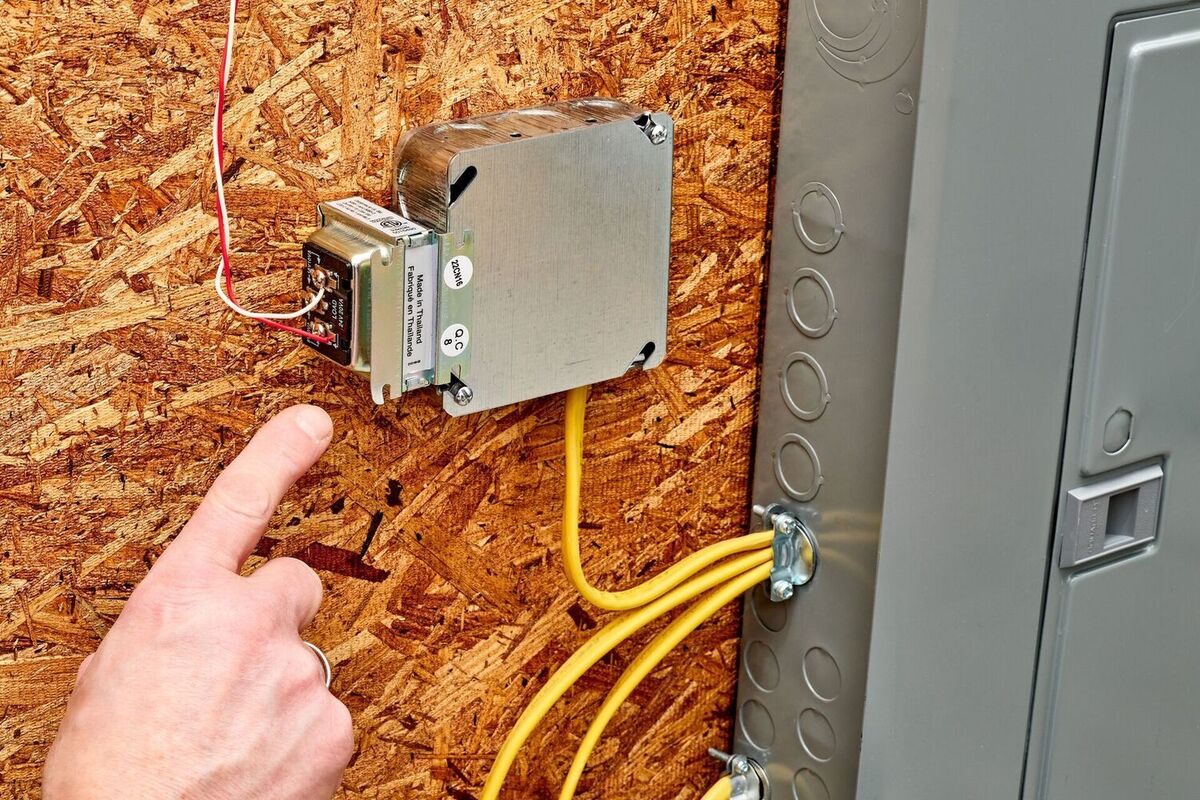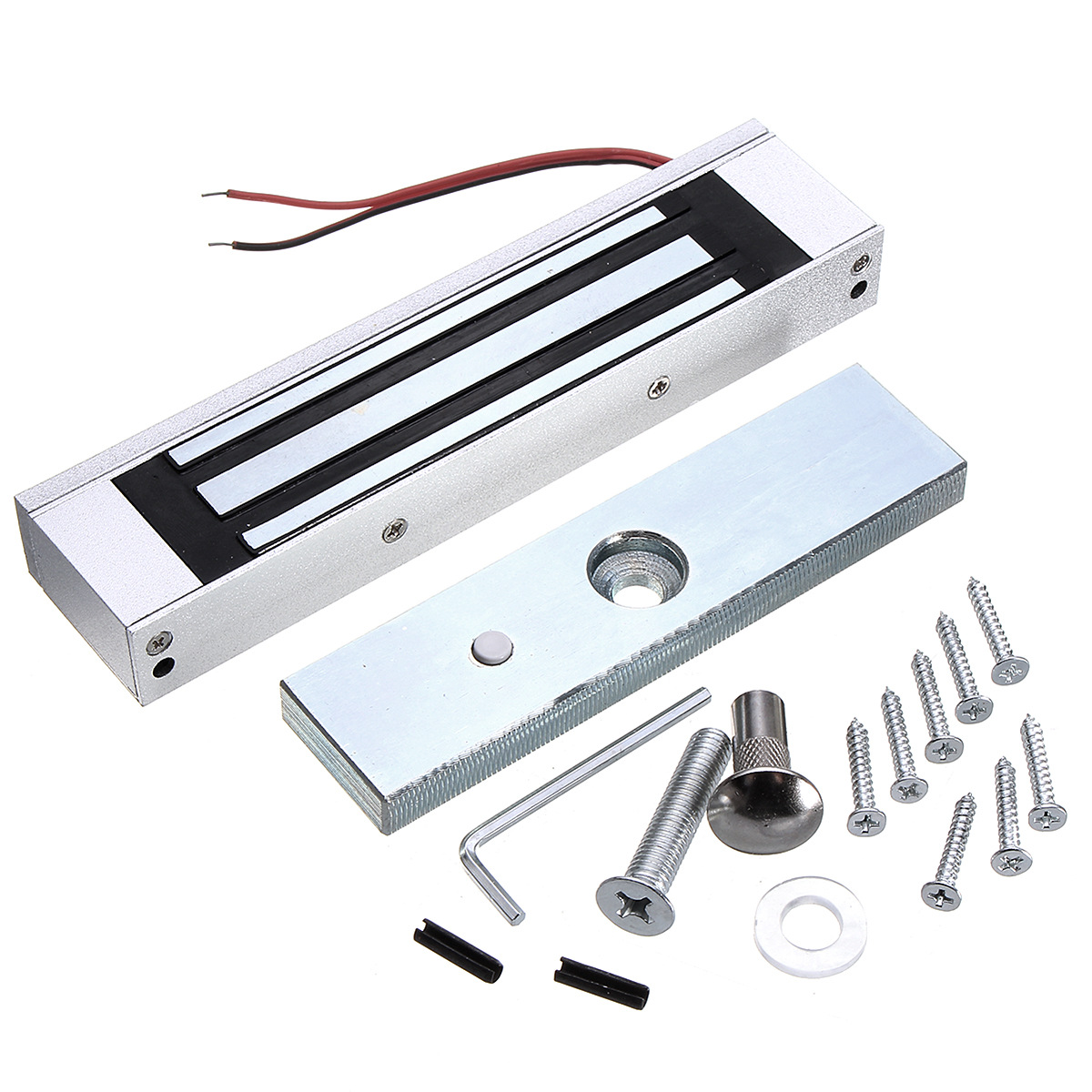

Articles
How Does A Doorbell Utilize An Electromagnet
Modified: March 1, 2024
Learn how doorbells work and how they utilize electromagnets in this informative article. Discover the science behind this common household device.
(Many of the links in this article redirect to a specific reviewed product. Your purchase of these products through affiliate links helps to generate commission for Storables.com, at no extra cost. Learn more)
Introduction
An electromagnet is a device that uses an electric current to generate a magnetic field. It consists of a coil of wire wrapped around a core made of a magnetic material such as iron. When an electric current flows through the wire, it creates a magnetic field that can attract or repel objects made of magnetic materials. The strength of the magnetic field can be adjusted by changing the amount of current flowing through the wire.
In this article, we will delve into the fascinating world of electromagnets and explore how they are utilized in a common household device – the doorbell. We will uncover the inner workings of a doorbell system and understand how an electromagnet plays a crucial role in producing the familiar chime or buzzer sound when someone rings the doorbell.
By gaining an understanding of how electromagnets are harnessed in a doorbell, we can appreciate the practical application of this magnetic phenomenon and unravel the science behind the simple act of pressing a doorbell button.
Key Takeaways:
- Electromagnets in doorbells provide reliable sound production, adjustable intensity, and energy efficiency. Their practical application showcases the fascinating link between electricity and magnetism in everyday devices.
- While electromagnet-based doorbells offer consistent sound and customization, they require proper maintenance and are sensitive to power fluctuations. Understanding their advantages and limitations helps in making informed choices for home security.
How does an electromagnet work?
An electromagnet operates based on the fundamental principles of electromagnetism. When an electric current flows through a wire, a magnetic field is generated around it. This magnetic field can be intensified by winding the wire into a coil and introducing a core made of a magnetic material such as iron.
The key component of an electromagnet is the electric current. When an electric current flows through the wire, it creates a magnetic field perpendicular to the direction of the current flow, following the right-hand rule. The magnetic field lines form concentric circles around the wire, with the highest field strength at the center of the coil.
The strength of the magnetic field generated by an electromagnet depends on several factors, including the number of turns in the coil, the amount of current flowing through the wire, and the characteristics of the core material. Increasing the number of turns in the coil or the current flowing through the wire intensifies the magnetic field.
Using a magnetic core, such as iron, enhances the magnetic field further. The core material helps concentrate and channel the magnetic field lines, resulting in a stronger and more focused magnetic field. This makes the electromagnet more effective in attracting or repelling magnetic objects.
In the context of a doorbell system, an electromagnet is used to produce sound when the doorbell button is pressed. When the current flows through the wire of the electromagnet, it generates a magnetic field that attracts a movable armature or plunger made of a magnetic material. The attraction between the electromagnet and the armature causes the armature to move towards the electromagnet’s core.
As the armature moves, it strikes a buzzer or chime, creating sound waves that we perceive as the doorbell sound. When the button is released, the current flow stops, and the magnetic field collapses. This releases the armature, allowing it to return to its original position.
In summary, an electromagnet works by utilizing the principles of electromagnetism through the flow of electric current. The magnetic field generated by the current flow attracts or repels magnetic objects, making it a versatile tool in various applications, including doorbell systems.
Components of a doorbell
A doorbell system consists of several key components that work together to produce the distinctive sound when someone rings the doorbell. Let’s take a closer look at each of these components:
1. Electromagnet:
The electromagnet is the heart of a doorbell system. It is typically a coil of wire wound around a core made of a magnetic material such as iron. When an electric current flows through the wire, it creates a magnetic field that attracts or repels the armature, which is responsible for producing the sound.
2. Push button:
The push button is the external component of the doorbell system that is mounted near the entrance. When someone presses the push button, it completes an electrical circuit, allowing the current to flow through the electromagnet and activate the doorbell mechanism.
Read more: How Does A Doorbell Work
3. Buzzer or chime:
The buzzer or chime is the audible component of the doorbell system. It produces the sound that alerts the occupants of the house when the doorbell is pressed. The sound can vary, ranging from a simple chime to a melody, depending on the type of doorbell chosen.
4. Power source:
A doorbell system requires a power source to supply the electrical energy necessary for its operation. This power source is usually a low-voltage transformer that converts the standard household voltage to a lower voltage suitable for the doorbell system. The transformer is typically located near the electrical panel of the house.
5. Wiring:
The wiring connects all the components of the doorbell system together, allowing the flow of electrical current. The wiring may include the low-voltage wires running from the transformer to the push button, as well as the wires connecting the push button to the electromagnet and the buzzer or chime.
Overall, these components work in harmony to create a functional doorbell system. When someone presses the button, the electrical circuit is completed, the current flows through the electromagnet, attracting the armature, and activating the buzzer or chime to produce the familiar doorbell sound.
Circuitry of a doorbell
The functioning of a doorbell system relies on the presence of a well-designed electrical circuit. Let’s examine the circuitry of a typical doorbell system and understand how the electromagnet is connected in the circuit.
The circuit of a doorbell system can be divided into two parts: the low-voltage and high-voltage sections. The low-voltage section operates at a safe voltage level, usually around 12-24 volts, while the high-voltage section connects to the main power supply of the house.
In the low-voltage section, a transformer is used to convert the high voltage of the household power supply to the lower voltage required for the doorbell system. The primary winding of the transformer is connected to the house’s electricity supply, while the secondary winding feeds the low-voltage circuit.
The low-voltage side of the circuit consists of the push button, the electromagnet, and the buzzer or chime. The push button, when pressed, completes the circuit, allowing the current to flow. The current flows from the transformer’s secondary winding to the push button, then to the electromagnet, and finally to the buzzer or chime. The electromagnet plays a critical role in this circuit, creating the magnetic field necessary for the doorbell mechanism to function.
The electromagnet is connected in parallel with the buzzer or chime. When the push button is pressed, the electric current flows through the electromagnet, creating a magnetic field that attracts the armature and activates the buzzer or chime. The electromagnet acts as a relay, controlling the flow of current to the sound-producing component of the doorbell system.
The high-voltage section of the circuit is responsible for providing power to the low-voltage transformer. This section is connected directly to the main power supply of the house. However, it is isolated from the low-voltage section to ensure safety and prevent any potential electrical hazards.
Overall, the circuitry of a doorbell system is designed to provide a safe and efficient way to produce sound when the doorbell button is pressed. The connection of the electromagnet within the circuit, in conjunction with other components, allows for the successful operation of the doorbell system.
Read more: How Does The Ring Doorbell Work
Operation of a doorbell
When someone presses the button of a doorbell, a series of events takes place to produce the familiar sound that alerts the occupants of the house. Let’s walk through the step-by-step process of how a doorbell works and understand the role of the electromagnet in producing sound.
Step 1: Pressing the button
When the button of the doorbell is pressed, it completes the electrical circuit. This allows the electric current to flow from the low-voltage transformer through the push button and into the doorbell system.
Step 2: Flow of current
The electric current flows from the transformer to the push button and continues its path through the wiring to the electromagnet.
Step 3: Activation of the electromagnet
As the current reaches the electromagnet, it creates a magnetic field around the coil. This magnetic field attracts the armature, which is a movable piece made of a magnetic material positioned near the electromagnet.
Read more: What Is A Utility Sink
Step 4: Sound production
When the armature is attracted to the electromagnet, it moves towards it, causing it to strike the buzzer or chime. This impact generates sound waves that propagate through the air, creating the audible signal that we recognize as the doorbell sound.
Step 5: Release of the button
Once the button is released, the electrical circuit is broken, and the current flow to the electromagnet stops. As a result, the magnetic field dissipates, and the armature is no longer attracted to the electromagnet.
Step 6: Return to the resting position
With no magnetic force pulling it, the armature returns to its resting position, ready to be attracted again when the button is pressed once more.
The electromagnet plays a crucial role in the operation of a doorbell by attracting and releasing the armature to produce the sound. Its ability to generate a strong magnetic field when a current flows through the coil makes it an effective component in capturing the attention of those inside the house.
Overall, the operation of a doorbell system is a simple yet effective process that relies on the interaction between the push button, the electromagnet, and the sound-producing component to create the familiar doorbell sound.
Advantages and limitations of using an electromagnet in a doorbell
The use of electromagnets in doorbells offers several advantages, but it also comes with some limitations. Let’s discuss the benefits and drawbacks of utilizing electromagnets in doorbell systems and compare them to alternative technologies.
Read more: What Is Utility Closet
Advantages of using electromagnets:
1. Reliable sound production: Electromagnets provide a reliable and consistent method for producing sound in doorbells. The attraction and release of the armature ensure a clear and distinct chime or buzzer sound every time the doorbell is pressed.
2. Adjustable sound intensity: The strength of the electromagnet’s magnetic field can be adjusted by controlling the current flowing through the coil. This allows for customization of the doorbell’s sound intensity to suit individual preferences.
3. Low power consumption: Electromagnetic doorbells consume relatively low amounts of power compared to alternative technologies. This makes them energy-efficient and helps in reducing electricity costs.
4. Durability: Electromagnets are generally robust and long-lasting. When properly maintained, they can withstand years of use without significant degradation in performance.
Limitations of using electromagnets:
1. Sensitivity to power fluctuations: Electromagnets in doorbells can be sensitive to power fluctuations or interruptions. Any disruption in the electrical supply may impact the performance of the electromagnet, resulting in inconsistent sound production or complete failure.
2. Reliance on electrical power: As electromagnets require a continuous flow of electric current to operate, they are dependent on a stable power source. In the event of a power outage, the doorbell may become non-functional until power is restored.
3. Complexity of installation: Installing and wiring an electromagnet-based doorbell system can be more complex compared to wireless or battery-operated alternatives. This requires knowledge of electrical circuits and proper installation techniques.
4. Maintenance requirements: Electromagnets may accumulate dust or debris over time, affecting their performance. Regular cleaning and maintenance are necessary to ensure optimal functionality.
Comparison to alternative technologies:
Alternative technologies, such as wireless doorbells or battery-operated doorbells, offer different advantages and limitations compared to electromagnet-based systems. Wireless doorbells provide the convenience of easy installation without the need for extensive wiring. On the other hand, battery-operated doorbells offer the flexibility to be installed in locations where electrical wiring is not feasible.
However, compared to electromagnets, these alternatives may have limitations in terms of reliability, sound quality, and power efficiency. Battery-operated doorbells, for example, require regular battery replacements, and wireless doorbells may face interference issues or range limitations.
Ultimately, the choice between electromagnet-based doorbells and alternative technologies depends on individual preferences, specific requirements, and the availability of power sources and wiring infrastructure.
Conclusion
In this article, we have explored the fascinating world of electromagnets and their crucial role in doorbell systems. Let’s recap the main points we have discussed and highlight the importance of electromagnets in doorbell systems.
We started by defining an electromagnet as a device that uses an electric current to generate a magnetic field. We learned about the basic principles of electromagnetism, including the role of electric current in creating a magnetic field around a coil of wire.
We then delved into the components of a doorbell system, which include the electromagnet, push button, buzzer or chime, power source, and wiring. Each of these components plays a vital role in the proper functioning of the doorbell system.
We explored the circuitry of a doorbell, understanding how the electromagnet is connected within the electrical circuit and how it works in conjunction with the push button and sound-producing component to create the doorbell sound. The electromagnetic attraction and release of the armature enable the production of a distinct chime or buzzer sound.
We also examined the advantages and limitations of using electromagnets in doorbell systems. While electromagnets provide reliable sound production, adjustable sound intensity, and low power consumption, they can be sensitive to power fluctuations and require proper maintenance and installation.
Lastly, we compared electromagnet-based doorbells to alternative technologies such as wireless or battery-operated systems, highlighting the different benefits and limitations of each option.
In conclusion, electromagnets play a vital role in doorbell systems, providing a reliable, adjustable, and energy-efficient method for producing the distinct chime or buzzer sound. Their use in doorbells demonstrates the practical application of electromagnetism in everyday devices, showcasing the inherent link between electricity and magnetism.
Whether you’re answering your front door or experiencing the joy of a visit from friends or family, the familiar sound of a doorbell reminds us of the presence and convenience that electromagnets bring to our homes.
Frequently Asked Questions about How Does A Doorbell Utilize An Electromagnet
Was this page helpful?
At Storables.com, we guarantee accurate and reliable information. Our content, validated by Expert Board Contributors, is crafted following stringent Editorial Policies. We're committed to providing you with well-researched, expert-backed insights for all your informational needs.












0 thoughts on “How Does A Doorbell Utilize An Electromagnet”